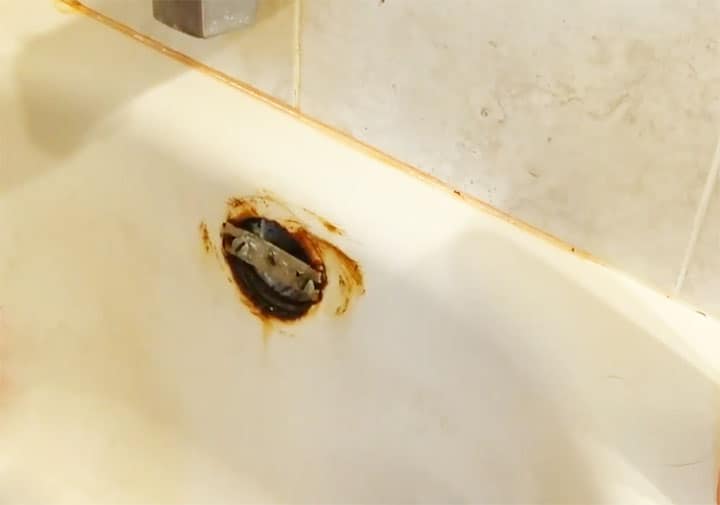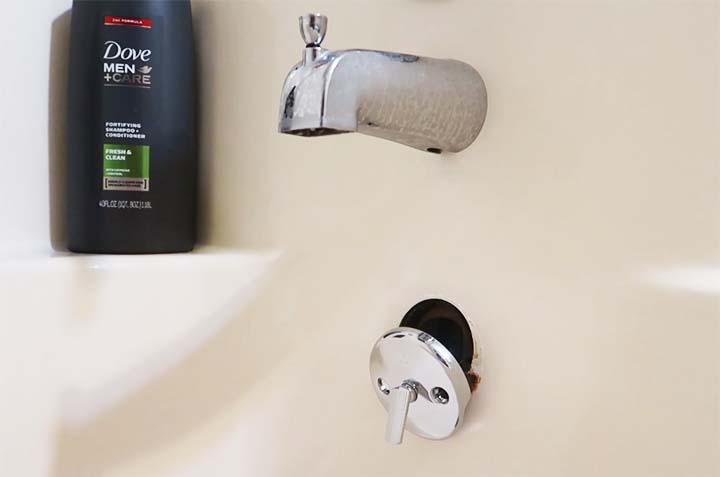The overflow drain in the bathtub prevents the bathtub overflow and saves you from any possible mess in the bathroom. Therefore, the overflow drain or screw cover is an integral part of the bathtub for proper operation.
However, due to years of use and not removing the screw cover, it may catch rust and start corroding. The rust may even damage the bathtub look. Hence, when the bathtub overflow cover screws rusted, you need to take immediate action.
The rust in the overflow cover screw may happen due to many reasons. The rust-resistant protection of it may wear out with time. Also, when you don’t clean it for years, rust will slowly start building around it, reducing its lifespan.
Whatever may be the case, you need to replace the rusted overflow screw cover to ensure the proper functioning of the bathtub. Also, when you want to replace the overflow drain, the rusted screw might stop you from doing so. You need to replace the rusted screw or clean off the rust using commercial cleaner even at such moments.
What Is The Function Of A Bathtub Overflow Cover Screw?
The overflow screw cover is among the most important parts of a bathtub. It works to stop the overflow of the bathtub. So, you get rid of any messiness in your bathroom. Also, when your bathtub overflows continuously to cause a flood in the bathroom, it may damage the floor seriously.
Therefore, manufacturers add an overflow drain or screw cover to keep the bathtub water level under your control. When the bathtub water level exceeds the overflow point, the screw cover will help drain the bathtub quickly through the drainage line. So, even if you forget to turn off the bathtub faucet timely, your bathroom won’t overflow.
It is a great benefit as your bathroom floor remains safe from water-borne damages. Plus, you won’t have to soak the water to dry the floor.
Bathtub Overflow Cover Screws Replacement Signs
Yes, the bathtub’s overflow cover screw or plate is important for keeping the tub in good condition. However, the same screw plate may cause you immense problems when it gets old and damaged.
Thus, you have to be aware of the signs of a damaged overflow cover plate. It will help you know then the rusted bathtub overflow cover screw needs replacement. Luckily, multiple signs will help you know when the cover screw of the overflow needs replacement.
The first sign is, of course, any rust on the screw cover. When the cover lasts for several years, the cover will slowly start rusting due to water on it. The rust will build up slowly and may corrode the overflow drain soon.
Another easy sign to identify a non-functioning or damaged overflow screw cover is the slow draining of the water from the bathtub. When the bathtub pipe gets clogged for any reason, the overflow cover will become less effective. Thus, it slows down the draining rate. Also, a damaged or broken overflow cover plate reduces the draining rate.
Also, the gasket of the overflow drain cover may get damaged, mainly due to rust and corrosion. The gasket fits right behind the cover screw, and when it starts wearing out, the overflow drainer will not run properly. Thus, you will need to replace it to stop the bathtub from overflowing.
Bathtub Overflow Cover Screws Rusted: The Solutions
When the overflow cover screws catch rust and need replacement, you have to remove and replace the screw with a new one. Also, cleaning the screw may help eliminate the rust without replacing it entirely.
Step 1: Preparing for overflow screw cover repairing:
Firstly locate the overflow screw cover. Usually, most bathtub manufacturers put it right under the faucet for a uniform setup and easy access to it. Depending on the models, the cover may have couples or multiple screws for a secure connection.
This is different from the kitchen sink overflow cover, which doesn’t have any screws. So, remove the faucet decoration cap and see the screws on the overflow cover. Then, choose the screwdriver accordingly to remove the screw with ease. Ideally, you should choose a long-handle screwdriver to access the screw easily.
Step 2: Remove the screw and clean the overflow cover
First, remove any remaining mold and mildew growth on the screw cover. You may use a rag for this purpose. After removing the deposits from the overflow cover with the rag, allow it to dry. Then, you have to apply a penetrating lubricant to get rid of the rust from the overflow cover screw.
When you are confident enough that the rust has come off from the screw, try loosening it with the screwdriver. You have to rotate the screwdriver connecting the screw counterclockwise for this purpose. At times the slot to hold the screwdriver may get damaged. You can try to put a rubber band between the screw and the screwdriver in such cases.
Step 3: Cleaning and repairing the overflow drain
Check if the gasket inside the overflow drain is damaged or not. If it appears damaged, you need to replace it with a new one. Also, try to remove all the rust from the screw and the overflow cover using commercial cleaners. Then, reattach the screw and check the overflow drainer performance.
Screw Cover Rust Removal Solutions
There’re multiple items that you can use to remove rust or loosen a rusted screw without damaging it entirely. The list includes:
Penetrating lubricant:
Penetrating lubricant is a commercial product to remove rust from screws. You should get it from any nearby hardware shop. You need to apply it on the rusted screw and wait for a few minutes to wipe off the loose rust. It will help you remove the rusted screw without forcing it.
Household cleaner:
Your regular household cleaner is an amazing product, and you can use it to easily remove rust from the screw. Many liquid cleaners will remove the rust within a few minutes. Also, you may use abrasive sand on the screwdriver head to remove the screw and then wipe it out to eliminate the rust.
Vise grip:
The vise grip is the last solution when none of those, as mentioned earlier solutions will work. For this, trim the screw head with a close-quarter hacksaw. You need to trim it in a way so that only the post protruding parts of the screw remain from the hole.
Then grab the protruding posts with the vise grip and turn counterclockwise to remove the screw from the holes.
Tips on Preventing Rust from the Overflow Screw Cover
Moisture and water are the two main culprits causing the rust of the overflow drain cover of the bathtub. So, you have to protect the cover screw from water and moisture to stop rust development. You can use a rust-resistant coating or sealant on the screw to prevent rust.
Rust-Oleum has some incredibly good sealant for use to stop rust build upon any surfaces. Also, use rust-resistant screws when you remove the old and rusted screw. Going for the rust-treated stainless steel screws will help you.
Final Words
Bathtub overflow cover screws rusted is a concerning issue for your bathtub operation. It will drain slowly and may cause an overflow to damage the bathroom floor. You, therefore, must remove and replace the rusted screw ASAP.
We hope our guidelines on the rusted screw removal process will help you in this cause. Also, make sure you have removed the rust before loosening the screw to stop damaging the entire overflow drain setup. Lastly, replace the damaged screw with a new one and enjoy your comfortable bathing.
I am James Martin, An professional plumber with more than 16 years of experience. The main purpose of my writing is to share my experiences of helping others. Be with me and explore bathroom plumbing, installation, cleanness ideas, and many more.




